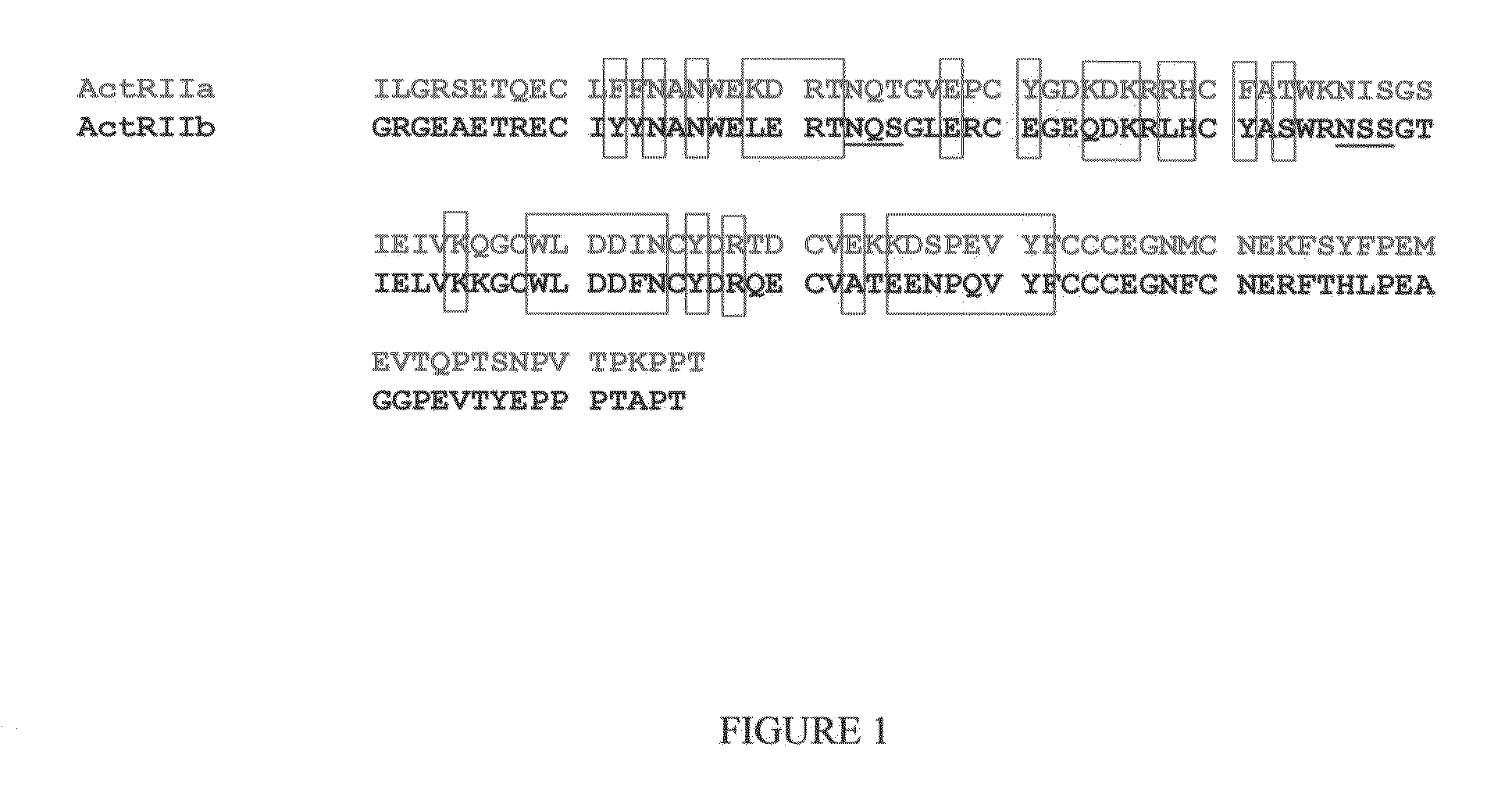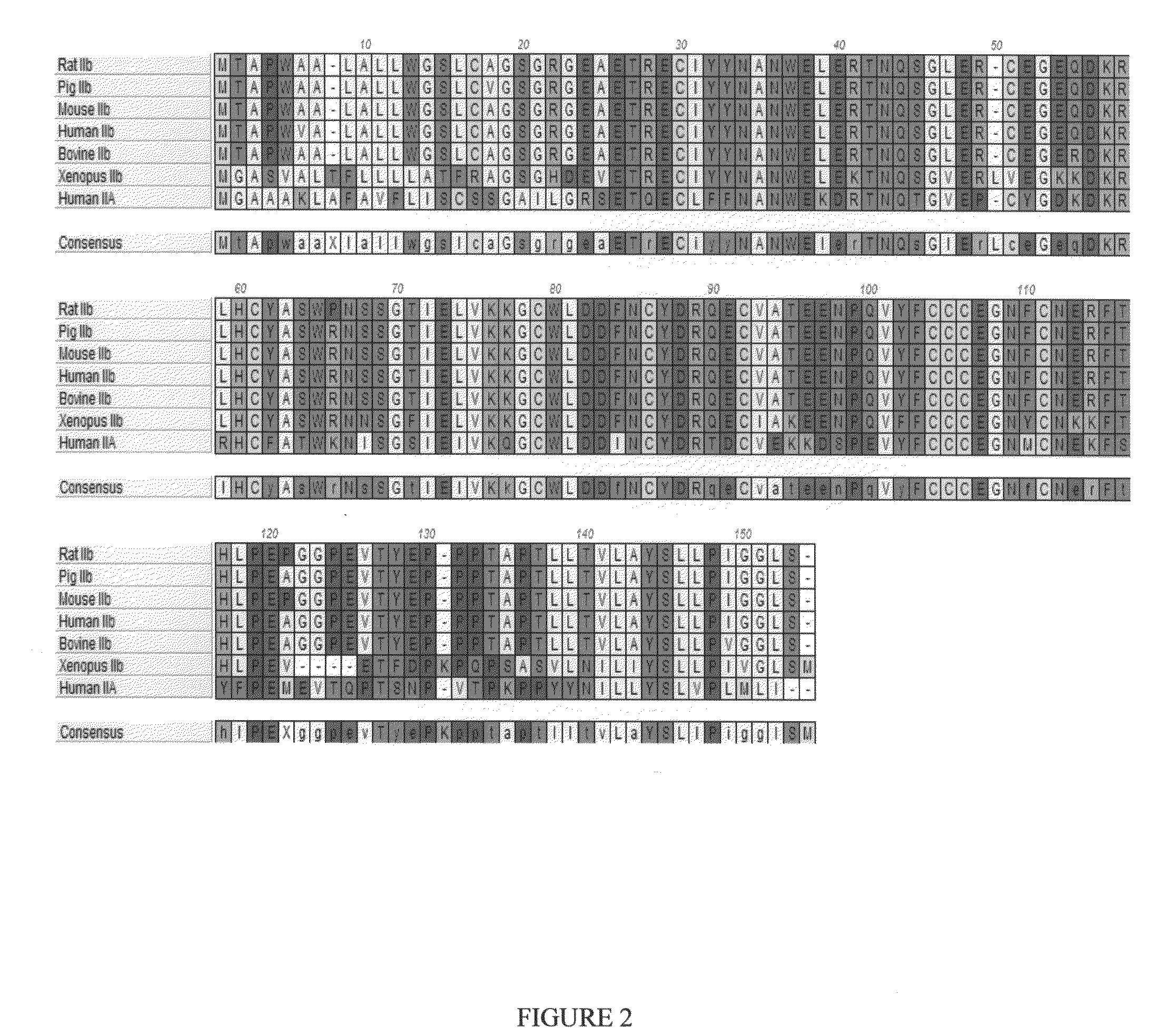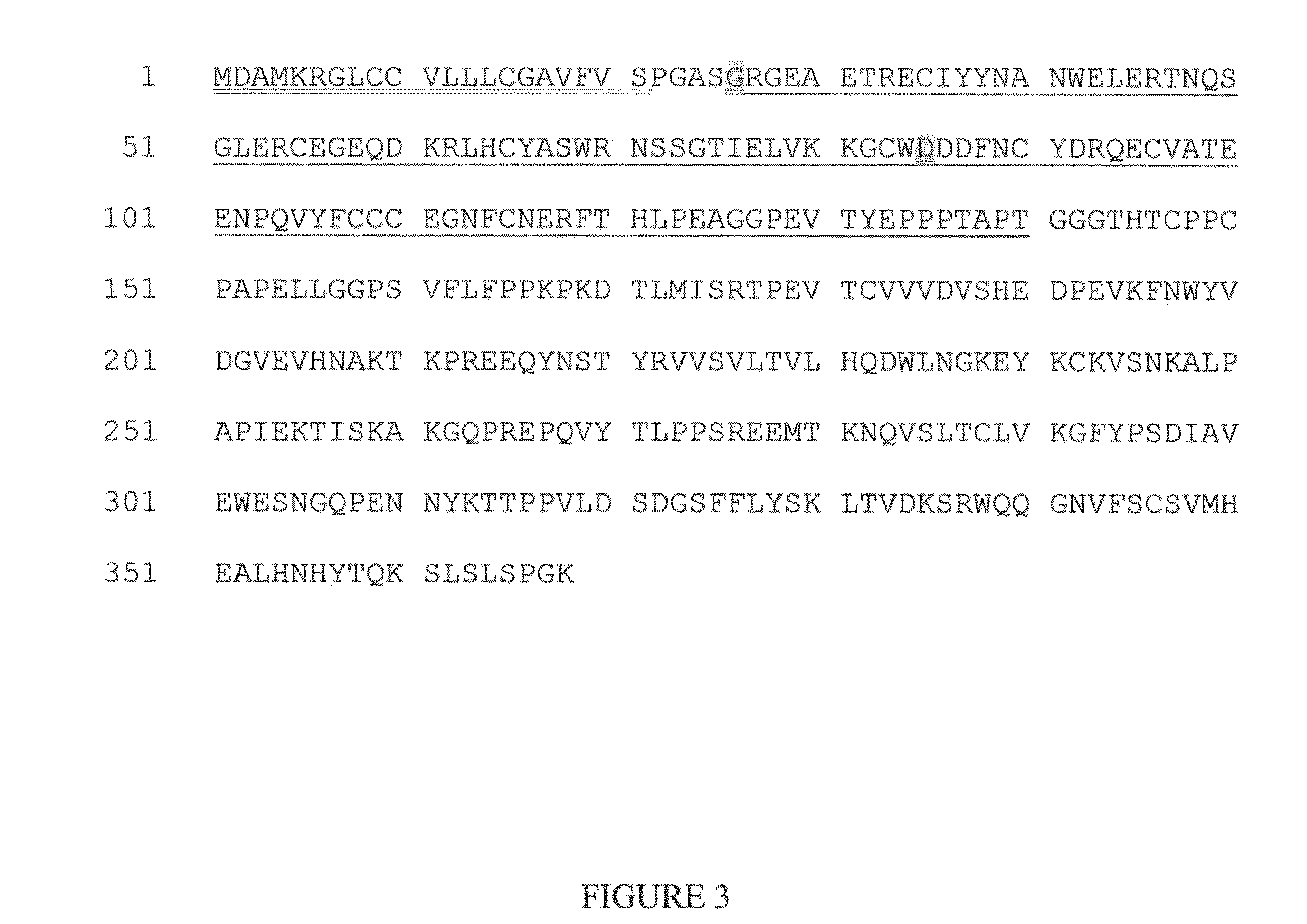Use of GDF traps to increase red blood cell levels
a technology of red blood cell and trap, which is applied in the field of gdf, can solve the problems of many individuals being refractory and the effect of epo not being uniformly effective, and achieve the effects of improving pharmacokinetics, enhancing one or more of in vivo stability, and facilitating purification
- Summary
- Abstract
- Description
- Claims
- Application Information
AI Technical Summary
Benefits of technology
Problems solved by technology
Method used
Image
Examples
example 1
Generation of a GDF Trap
[0166]Applicants constructed a GDF Trap as follows. A polypeptide having a modified extracellular domain of ActRIIB with greatly reduced activin A binding relative to GDF11 and / or myostatin (as a consequence of a leucine-to-aspartate substitution at position 79 in SEQ ID NO: 1) was fused to a human or mouse Fc domain with a minimal linker (three glycine amino acids) in between. The constructs are referred to as ActRIIB(L79D 20-134)-hFc and ActRIIB(L79D 20-134)-mFc, respectively. Alternative forms with a glutamate rather than an aspartate at position 79 performed similarly (L79E). Alternative forms with an alanine rather than a valine at position 226 with respect to SEQ ID NO: 7, below were also generated and performed equivalently in all respects tested. The aspartate at position 79 (relative to SEQ ID NO: 1, or position 60 relative to SEQ ID NO: 7) is highlighted in gray below. The valine at position 226 relative to SEQ ID NO: 7 is also highlighted in gray b...
example 2
Bioassay for GDF-11 and Activin-Mediated Signaling
[0174]An A-204 Reporter Gene Assay was used to evaluate the effects of ActRIIB-Fc proteins and GDF Traps on signaling by GDF-11 and Activin A. Cell line: Human Rhabdomyosarcoma (derived from muscle). Reporter vector: pGL3(CAGA)12 (Described in Dennler et al, 1998, EMBO 17: 3091-3100). The CAGA12 motif is present in TGF-Beta responsive genes (PAI-1 gene), so this vector is of general use for factors signaling through Smad2 and 3.
[0175]Day 1: Split A-204 cells into 48-well plate.
[0176]Day 2: A-204 cells transfected with 10 ug pGL3(CAGA)12 or pGL3(CAGA)12(10 ug)+pRLCMV (1 ug) and Fugene.
[0177]Day 3: Add factors (diluted into medium+0.1% BSA). Inhibitors need to be preincubated with Factors for 1 hr before adding to cells. 6 hrs later, cells rinsed with PBS, and lyse cells.
[0178]This is followed by a Luciferase assay. In the absence of any inhibitors, Activin A showed 10 fold stimulation of reporter gene expression and an ED50˜2 ng / ml. G...
example 3
GDF-11 Inhibition by N-Terminal and C-Terminal Truncations
[0180]Variants of ActRIIB(20-134)-hFc with truncations at the N-terminus and / or C-terminus were generated and tested for activity as inhibitors of GDF-11 and activin. The activities are shown below (as measured in conditioned media):
C-Terminal ActRIIB-hFc Truncations:
[0181]
IC50 (ng / mL)GDF-11ActivinActRIIB(20-134)-hFc4522ActRIIB(20-132)-hFc8732ActRIIB(20-131)-hFc12044ActRIIB(20-128)-hFc130158
[0182]As can be seen, truncations of three (ending with . . . PPT), six (ending with . . . YEP) or more amino acids at the C-terminus causes a threefold or greater decrease in the activity of the molecule. The truncation of the final 15 amino acids of the ActRIIB portion causes a greater loss of activity (see WO2006 / 012627).
[0183]Amino terminal truncations were made in the background of an ActRIIB(20-131)-hFc protein. The activities are shown below (as measured in conditioned media):
N-terminal ActRIIB-hFc Truncations:
[0184]
IC50 (ng / mL)GDF-...
PUM
| Property | Measurement | Unit |
|---|---|---|
| Fraction | aaaaa | aaaaa |
| Fraction | aaaaa | aaaaa |
| Fraction | aaaaa | aaaaa |
Abstract
Description
Claims
Application Information
 Login to View More
Login to View More - R&D
- Intellectual Property
- Life Sciences
- Materials
- Tech Scout
- Unparalleled Data Quality
- Higher Quality Content
- 60% Fewer Hallucinations
Browse by: Latest US Patents, China's latest patents, Technical Efficacy Thesaurus, Application Domain, Technology Topic, Popular Technical Reports.
© 2025 PatSnap. All rights reserved.Legal|Privacy policy|Modern Slavery Act Transparency Statement|Sitemap|About US| Contact US: help@patsnap.com



